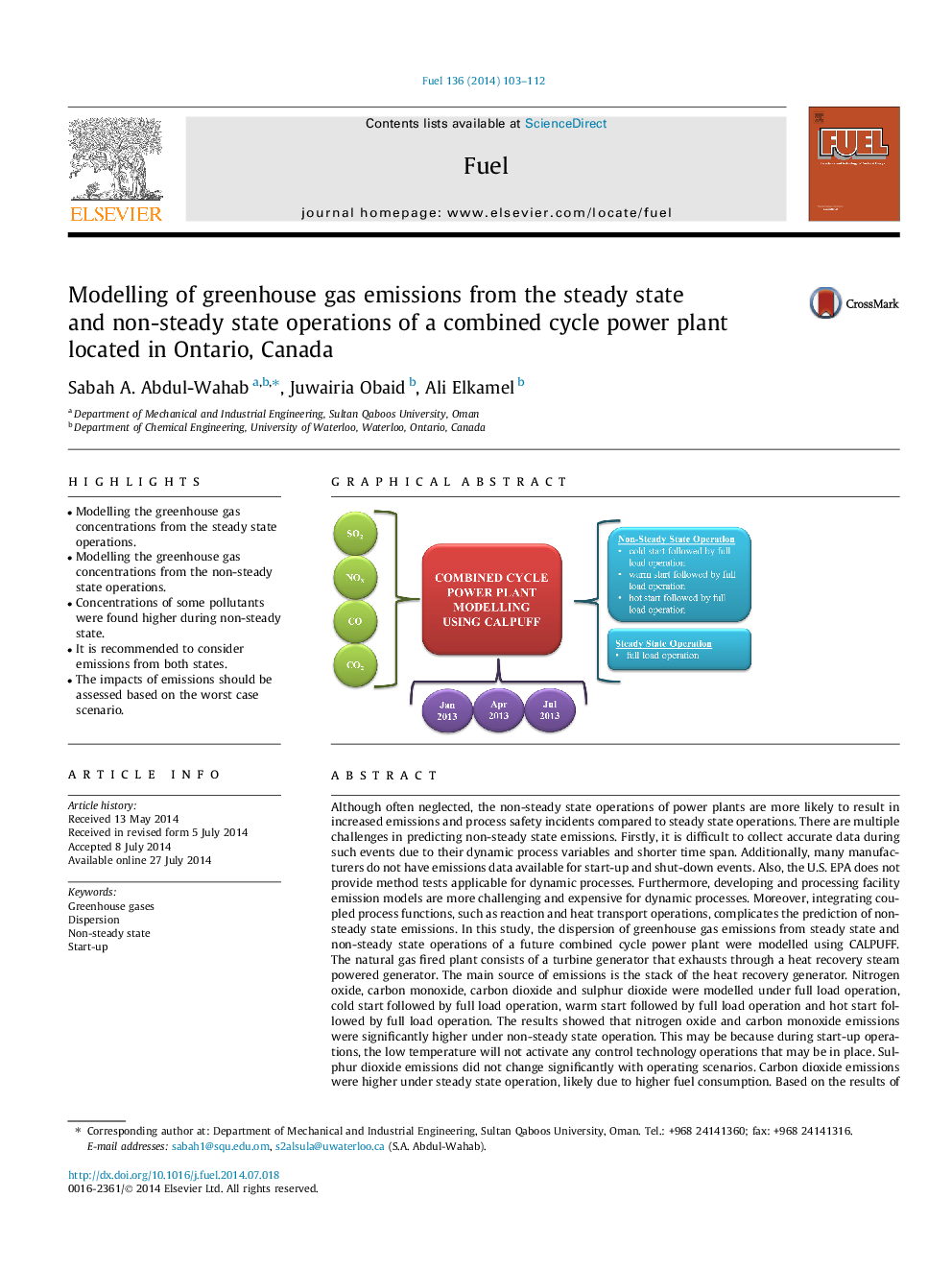| کد مقاله | کد نشریه | سال انتشار | مقاله انگلیسی | نسخه تمام متن |
|---|---|---|---|---|
| 206079 | 461138 | 2014 | 10 صفحه PDF | دانلود رایگان |
• Modelling the greenhouse gas concentrations from the steady state operations.
• Modelling the greenhouse gas concentrations from the non-steady state operations.
• Concentrations of some pollutants were found higher during non-steady state.
• It is recommended to consider emissions from both states.
• The impacts of emissions should be assessed based on the worst case scenario.
Although often neglected, the non-steady state operations of power plants are more likely to result in increased emissions and process safety incidents compared to steady state operations. There are multiple challenges in predicting non-steady state emissions. Firstly, it is difficult to collect accurate data during such events due to their dynamic process variables and shorter time span. Additionally, many manufacturers do not have emissions data available for start-up and shut-down events. Also, the U.S. EPA does not provide method tests applicable for dynamic processes. Furthermore, developing and processing facility emission models are more challenging and expensive for dynamic processes. Moreover, integrating coupled process functions, such as reaction and heat transport operations, complicates the prediction of non-steady state emissions. In this study, the dispersion of greenhouse gas emissions from steady state and non-steady state operations of a future combined cycle power plant were modelled using CALPUFF. The natural gas fired plant consists of a turbine generator that exhausts through a heat recovery steam powered generator. The main source of emissions is the stack of the heat recovery generator. Nitrogen oxide, carbon monoxide, carbon dioxide and sulphur dioxide were modelled under full load operation, cold start followed by full load operation, warm start followed by full load operation and hot start followed by full load operation. The results showed that nitrogen oxide and carbon monoxide emissions were significantly higher under non-steady state operation. This may be because during start-up operations, the low temperature will not activate any control technology operations that may be in place. Sulphur dioxide emissions did not change significantly with operating scenarios. Carbon dioxide emissions were higher under steady state operation, likely due to higher fuel consumption. Based on the results of this study, air quality impact assessments are recommended to consider emissions from both, steady state and non-steady state operation to ensure that impacts are assessed based on the worst case scenario.
Figure optionsDownload as PowerPoint slide
Journal: Fuel - Volume 136, 15 November 2014, Pages 103–112
